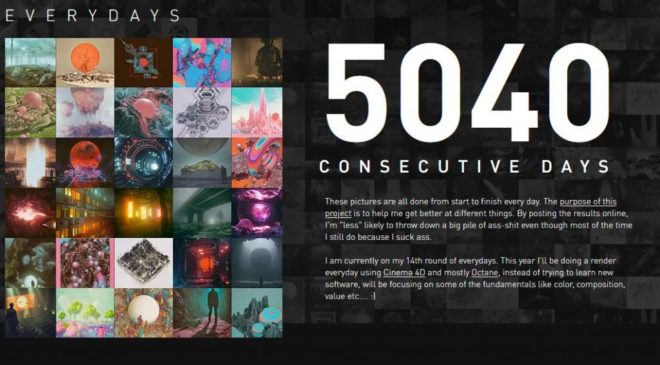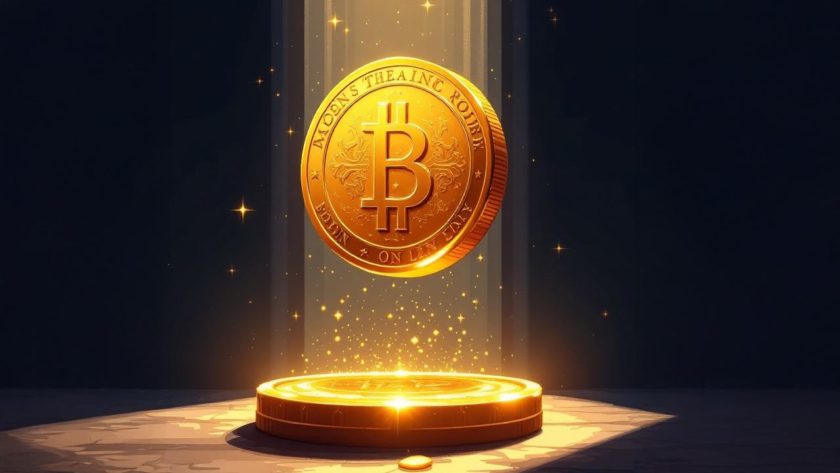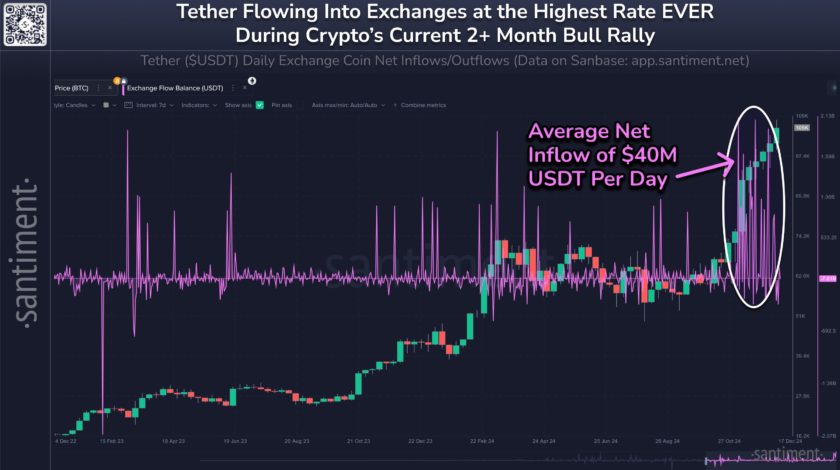At the age of 26, Wisconsin web designer Michael Winkelmann began creating a new piece of digital art in his personal time every single day. He calls them ‘Everydays’.
“I saw a pretty big step-up in the work that I do,” he says. “The ‘Everydays’ are basically just the pictures that I do every single day, and I’ve been doing those for over 5,000 days now.”
Thirteen years later Beeple, as he’s better known, has been commissioned by huge acts like Justin Bieber and Imagine Dragons and he emerged in 2020 as a trail blazing figure in the NFT community. His digital art collections have fetched record prices in the millions at NFT auction houses including Rarible and Nifty and he’s about to take a major step into the mainstream, with Christies offering a collage of 5000 Everydays pieces at auction from Feb. 25 until Mar. 11.
“This monumental digital collage marks the first time Beeple’s work will be sold at a major auction house,” Christies said in an announcement. “It’s also the first-ever purely digital artwork (NFT) to be offered at a traditional auction house, with its authenticity assured thanks to blockchain technology,”
Beeple’s work touches on politics and pop culture, with a typical example being a recent image depicting Amazon’s Jeff Bezos as an octopus that he created on the day that the billionaire announced his upcoming retirement as CEO. Winkelmann says his daily ritual has made him a better artist.
“The broader message with this entire Everyday project is just about practicing and looking at things long term. I look at it as one long-term project. And so, incrementally improving and just sticking with something.”
Winkelmann, 39, only discovered NFT’s around four months ago, and immediately set to work converting his freely available Instagram art into highly sought after digital collectibles. In November he sold an election-themed digital collectible for $66,666.60, and a December auction brought in $3.5 million dollars. While one piece went for as much as $777,777, he also sold hundreds of images for $969 each of which have since gained in value exponentially.
NFT stands for Non-Fungible Token, which means each token is unique and thus distinct from other tokens. Unique tokens make it possible to designate them as representing ownership of specific digital goods, allowing for transferable ownership of digital images, texts, or even in-game items.
“I think it’s just going to be seen as the digital art revolution. I truly believe this is the start of the next chapter in art history.”
The Wisconsin artist says that while everything is reproducible on the internet, NFTs allow for individual ownership of a piece even though it is copied and circulated widely.
“I’m very open with allowing people to share stuff and post it wherever,” he says. “You can’t police the f—ing Internet. You post on the Internet, it’s the f—ing Internet! The cool thing about the blockchain is that you can kind of have it both ways.”
He adds that NFT’s are a “very advantageous way of collecting art, because it will live on as long as the blockchain lives on, and it can take all different forms.”
Got 4 offers today in the $12-$14k for @beeple‘s Politics is BS NFT.
What is going on 😱
I bought it for $1k like 2 months ago. pic.twitter.com/q94wXmi3xh
— Matty (@DCLBlogger) February 8, 2021
Turning point
Last December, Winkelmann hit the crypto news headlines after he auctioned off a collection of digital artworks for $3.5 million on the Nifty platform. While the previous 13 years of Everydays accompanied a steady career progression of better clients and ever-increasing paychecks, he wasn’t quite prepared for “overnight” success.
“That was the big shift where it was like ‘oh shit this is it’, this is a crazy opportunity to look at my work that I never really thought about as being collectible, and now suddenly it’s like ‘wow this is very collectible!’”
But he points out he wasn’t a starving artist before the auction: “[Many people] think this is a little bit more rags to riches than it is. I was making pretty good money before.”
While he credits his success to a large social media following and established name as “one of the most well known digital artists,” Winkelmann acknowledges that he was also in the right place at the right time with little competition.
“There’s a lot of low hanging fruit […] In more mature spaces, you really need to come up with a fantastic idea to stand out, everybody has already got the easy shit. It feels like there’s still a lot of easy shit to try.”
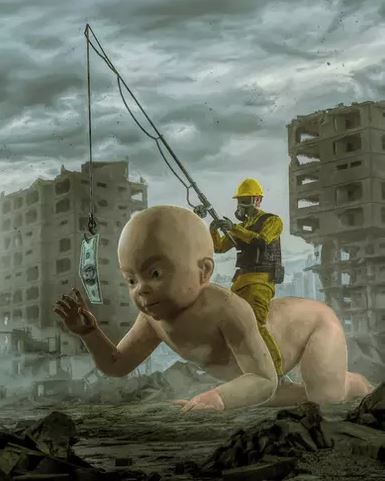
An artistic revolution
It is said that art is either plagiarism or revolution. The art world is in a constant state of redefinition, and it’s normal for new styles to begin as underground ‘degenerate’ movements that struggle for acceptance in the established art world. In this way it’s similar to cryptocurrency, which was first dismissed and derided by traditional investors and institutions, many of whom are now re-evaluating.
In the past, Winkelmann says that neither graphic art, nor graphic artists, could really exist in the traditional sense. No graphic artist could truly sell their personal work — they had to work as artisans because working as an independent digital artist was not an option.
“It wasn’t. There was just no way to collect your work. The technology did not exist, and the market did not exist… Everybody was just, you know, freelance, or they just had a job or whatever.”
This means that the innovation of NFT’s representing ownership of digital art represents a pivotal moment in art itself: art no longer needs be a physical item to be sold and displayed, but is equally legitimate as a digitally expressed and cryptographically transferrable manifestation of the artist’s mind.
Winkelmann said the upcoming Christies auction of his collage will be another milestone, as its a major auction house conducting “their first ever 100% digital auction. There will be no physical piece; they’re literally just auctioning off a JPEG. And so, I think that will be a very big moment, and big validation for this space. They’ll also be accepting Ether for this auction for the first time ever.” (Christies auctioned a combination physical work/NFT piece last year for $130,000.)
“Whoever buys it, I will work with them in the future to be like ‘okay, so how do we want to show this?’ Do we want to project it on the side of a building, do we want to make a giant canvas of it? Do we want to put it on a big screen? The artwork itself can take a bunch of different forms; that’s the beauty of digital art.”
Christie’s is proud to offer “Everydays – The First 5000 Days” by @beeple as the first purely digital work of art ever offered by a major auction house. Bidding will be open from Feb 25-Mar 11.
Learn more here https://t.co/srx95HCE0o | NFT issued in partnership w/ @makersplaceco pic.twitter.com/zymq2DSjy7
— Christie’s (@ChristiesInc) February 16, 2021
Banksy on it
Beeple’s NFT journey from avant-garde to acceptance follows an arc not dissimilar to other hugely successful artists like Banksy, whose graffiti stencil art reliably sells for millions today. “20 years ago that wasn’t the case. That was vandalism. Like graffiti is not, you know, ‘art’, it’s vandalism.”
Indeed, we need not go far back in time to find similar narratives within the blockchain space. Back in early 2018 Cryptokitties, one of the first NFT projects, was slowing down the entire Ethereum network causing people to accuse the lovable but useless NFT cats of ruining Ethereum.
It is an unfortunate arc d’art that experimental artists are often under-appreciated in their time, with the likes of Van Gogh and Monet dying in obscurity before achieving wide recognition for their work. “So are you saying I’m going to die?” Winkelmann asks sarcastically but with a hint of existential dread, to which I reassure him that he appears well ahead of his historical peers. He agrees. “I feel very lucky to be in this position, especially so young to be able to capitalize on this.”
While he may now have a lot of money, Winkelmann won’t be rushing out to buy a Lamborghini.
“Honestly, I’m really just putting it back in, making more and more art and cooler projects that I didn’t have the ability to do […] anybody who is collecting my artwork, I very much look at them as ambassadors, and they’ve sort of given me that money to like ‘OK there you go, go do even cooler things’, and that’s what I want to do. I want to do bigger projects, that obviously requires more money, or hiring people, or this or that.”
Considering his generous art budget, I suggest an NFT Bitcoin Lamborghini that comes with a real, physical lambo as a bonus physical token. “I think that’s a good idea, that would be great! Is it a green or a yellow lambo?” he asks. “I’ve got to figure out something like that, I feel like that would be very interesting.”
I tell him I’m claiming a 10% cut on that idea. Beeple laughs. “You’ve got your royalties all set up there!”
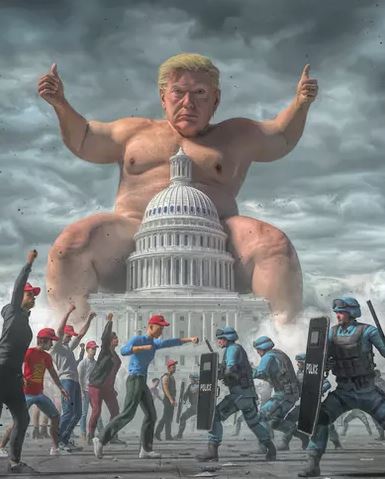
Art markets re-imagined
Speaking of royalties, NFTs open up new opportunities for artists because the pieces can be programmed so that whenever they are sold, a 10% royalty payment is returned to the artist.
This means that if an artist originally sells a piece for $100 and the buyer sells it to someone else some months later for $1,000, the artist will double their earnings to $200. Even more exciting, a $100,000 sale will net the artist $10,000 even years after the original sale, and the artist’s great grandchildren could theoretically benefit from the sale of the art a hundred years after the fact. In this new order, artists have a lifelong relationship with and ambassadorship to their pieces. “When you buy one of my NFT’s, it’s the beginning of us having a relationship,” says Winkelmann.
There are several platforms in which NFT’s can be traded. Winkelmann prefers Nifty Gateway, owned by the Winklevoss twins, for his sales. He’s far from a cryptocurrency maximalist, preferring instead to make his blockchain-enabled artwork as widely accessible as possible.
“The things I liked about Nifty is that they accept credit card payments. And again, I look at the NFT’s and the blockchain as sort of a means to an end, and not like the end. It’s one of these things where nobody really cares how credit cards work. They just work, they make your life easier and that’s how I look at NFT’s”
He adds: “Nobody’s going to give any shit about how NFT’s work or what blockchain they’re on.”
Until recently, a large portion of NFT art has been decidedly close to the ideas surrounding cryptocurrency and blockchain, giving them a sort of meta-quality. Winkelmann believes this will change, as NFT’s are merely “the mechanism used to make these, prove provenance, prove ownership. I don’t think moving forward it’s going to have as much to do with crypto.”
Crypto- themed art will certainly continue to exist, he says, but as “a subset of digital art”.
Future visions
Winkelmann believes that everything is being digitized, and our lives will soon revolve around virtual and augmented reality. This recalls the concept of The Metaverse, which refers to an ongoing, shared 3D space that connects various virtual worlds together. It was originally described by Neil Stephenson in 1992.
This future may be closer than we think. Twenty 1/1 NFT’s in Beeples latest auction were purchased for $2.2 million by an NFT fund (yes, such things exists) for the purpose of launching VR digital art galleries in several virtual words including Cryptovoxels, Decentraland and Somnium Space. The pieces were bundled together along with virtual land and museums, and tokenized as the B.20 token so that anyone can own a piece of NFT history. Winkelmann says we’re only just getting started exploring the possibilities:
“I think we will look back fondly on the days when we were just glued to our phones as the ‘good old days’. The alternate realities that people are living in now will be nothing compared to the alternate reality people will be living in when AR really becomes a very viable thing and people are wearing these headsets all day. I think you’re gonna see some f—ing crazy shit happening.”

